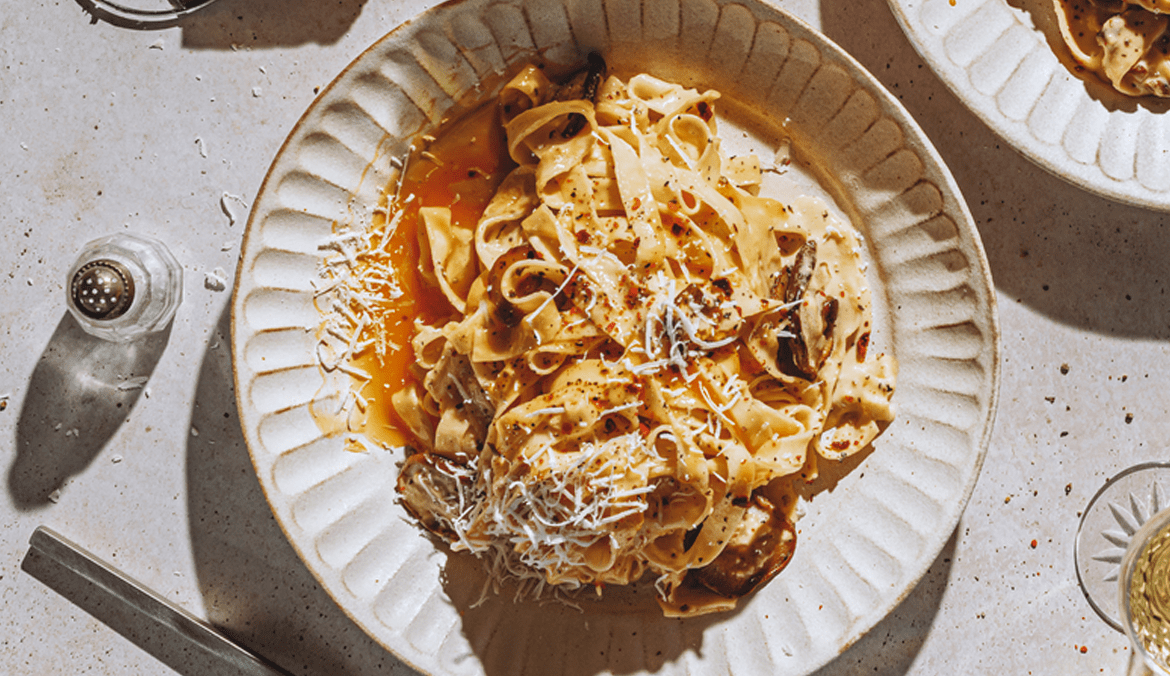[ad_1]
But for registered dietitian Meghan Sedivy, RD, LDN, America’s newfound love of mushrooms hardly comes as a surprise, considering how many health benefits they offer. “They contain antioxidants, like selenium, that may help strengthen the immune system, are a source of fiber, protein, and antioxidants, and contain Vitamin D which helps your body absorb calcium and maintain and build strong bones,” Sedivy says. It’s no wonder why folks simply can’t get enough of them.
To dig (pun intended) a little deeper into the wonderful world of mushrooms, we caught up with Olivia Roszkowski, chef-instructor of Plant-Based Culinary Arts at the Institute of Culinary Education’s New York City campus, to learn more.
14 best types of mushrooms for cooking
According to Roszkowski, there are five main types of mushrooms typically used in the kitchen. This includes button, cremini (or baby bella), portobello, shiitake, and oyster mushrooms. “All these varieties of mushrooms are commonly available at most grocery stores and farmers markets,” Roszkowski says. Although she notes that you’ll likely find a greater variety of “gourmet” or hyper-local varieties—beyond these five—at your local farmer’s market or grocery store due to increased demand and popularity of mushrooms in recent years. And, don’t forget to shop the dried mushroom section too, where Roszkowski says you’ll likely find a greater selection of shiitakes.
Fun fact: According to Roszkowski, the most common mushrooms found in grocery stores are farmed. “The majority of mushrooms produced in the United States—around 60 percent, originate from a region in Pennsylvania called Kennett Square and surrounding Chester County areas,” she says.
Ahead, Roszkowski shares more details about the five most common types of mushrooms for cooking and shares nine additional (but much rarer) varieties to explore the wider world of mushrooms. Keep in mind that although some of these options may be more difficult to source (and more costly), Roszkowski reassures us that they’re well worth it and will help unleash a whole new level of umami in some of your favorite recipes.
1. Button mushrooms
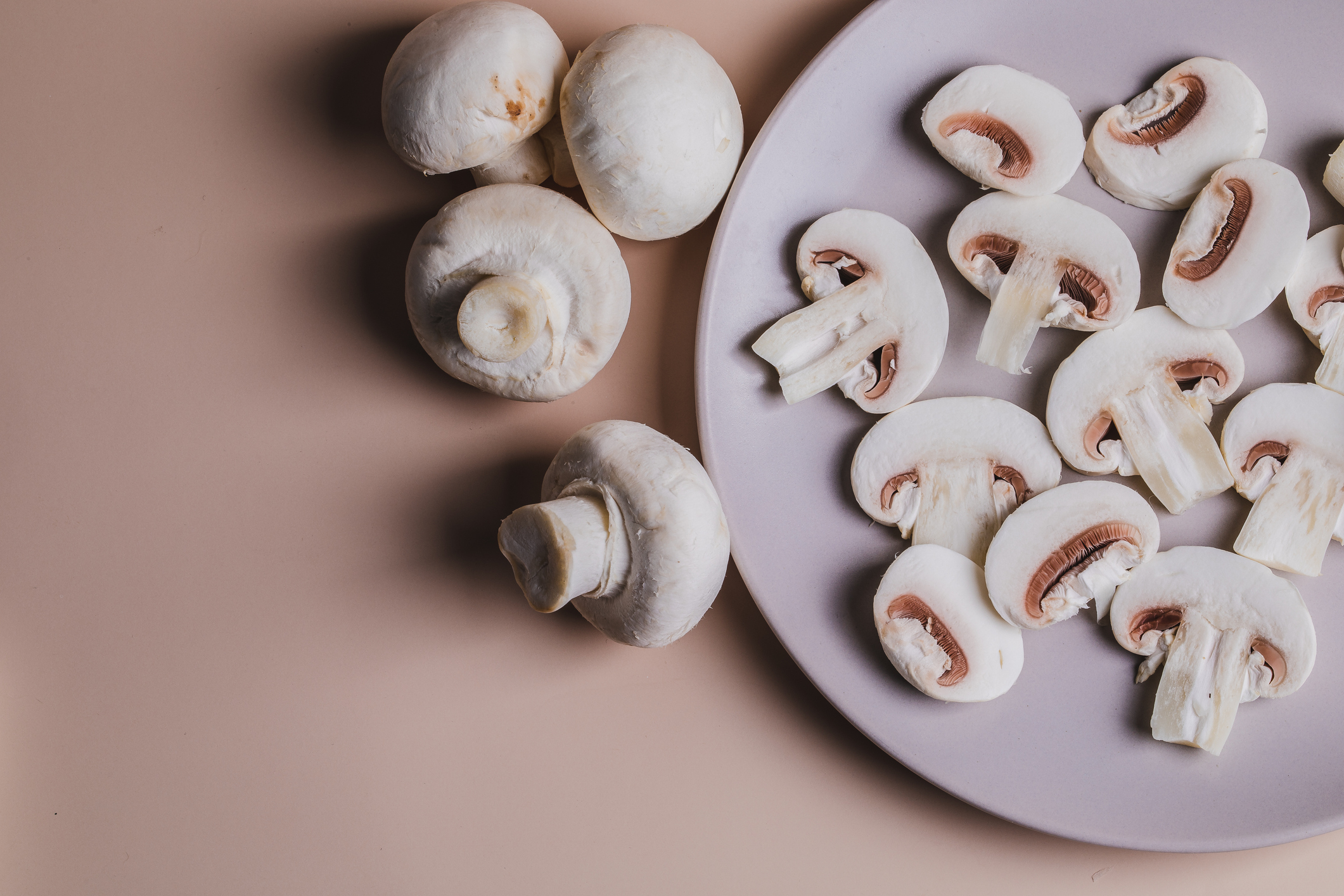
Perhaps one of the most commonly used varieties for cooking, Roszkowski says button mushrooms are round, contain a robust mushroom cap, and have an edible, tender stem. They’re also light in color and have a relatively mild flavor. According to her, some of the best ways to cook this type of mushroom is by using them to make cream of mushroom soup, gravies, fillings for dumplings, soups, skewers, stuffed mushrooms, or omelets.
2. Cremini or baby bella mushrooms
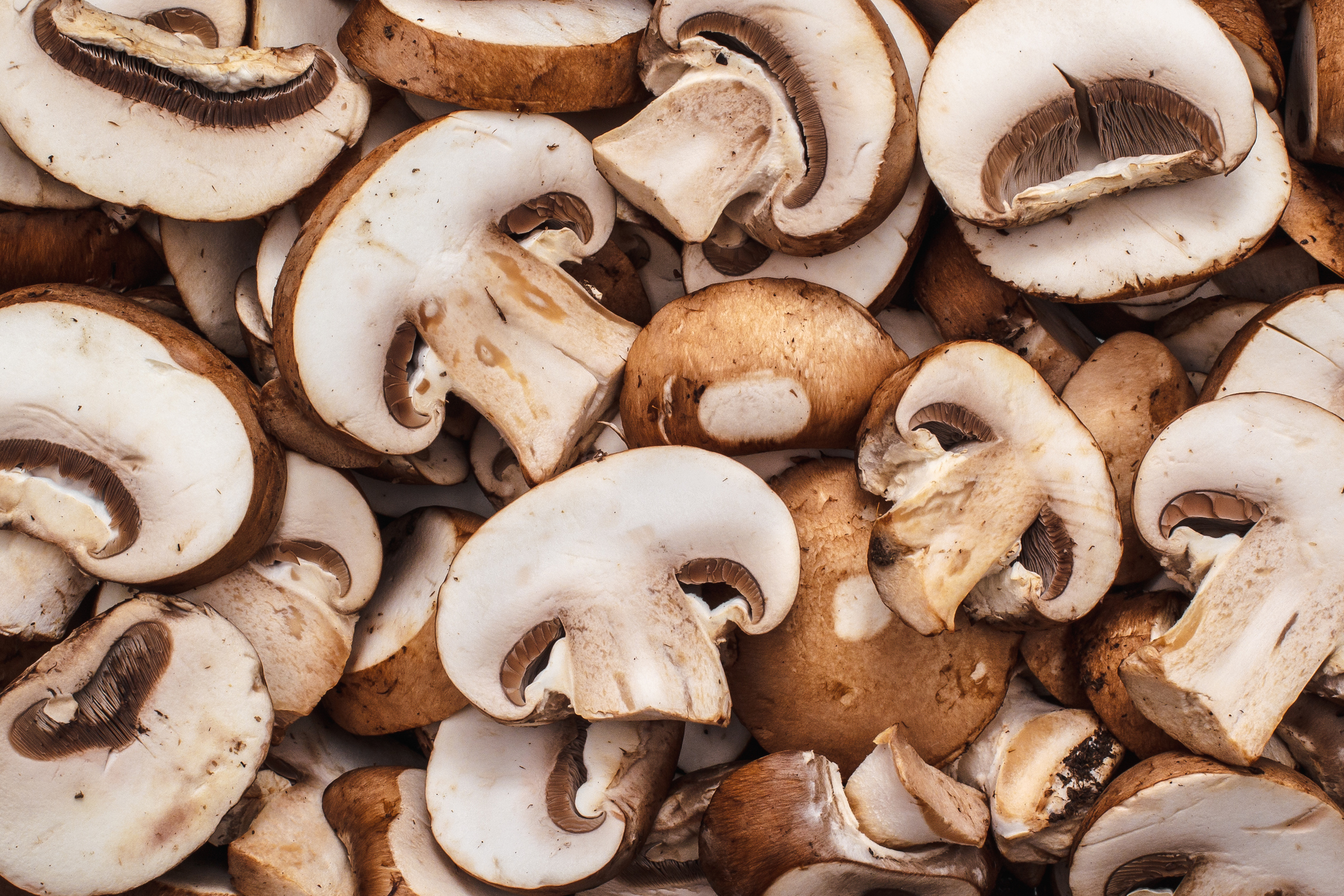
From the same family as button mushrooms, cremini, aka baby bella mushrooms, are very similar in taste, but only slightly larger and more mature than their younger counterparts. “They have a deeper brown hue, are slightly firmer, and are more concentrated in flavor,” Roszkowski says. Due to their larger size and slightly more developed flavor profile, cremini mushrooms are ideal for making rich mushroom sauces, baked pastries, ravioli fillings, and pasta dishes, like a hearty mushroom lasagna.
3. Portobello mushrooms
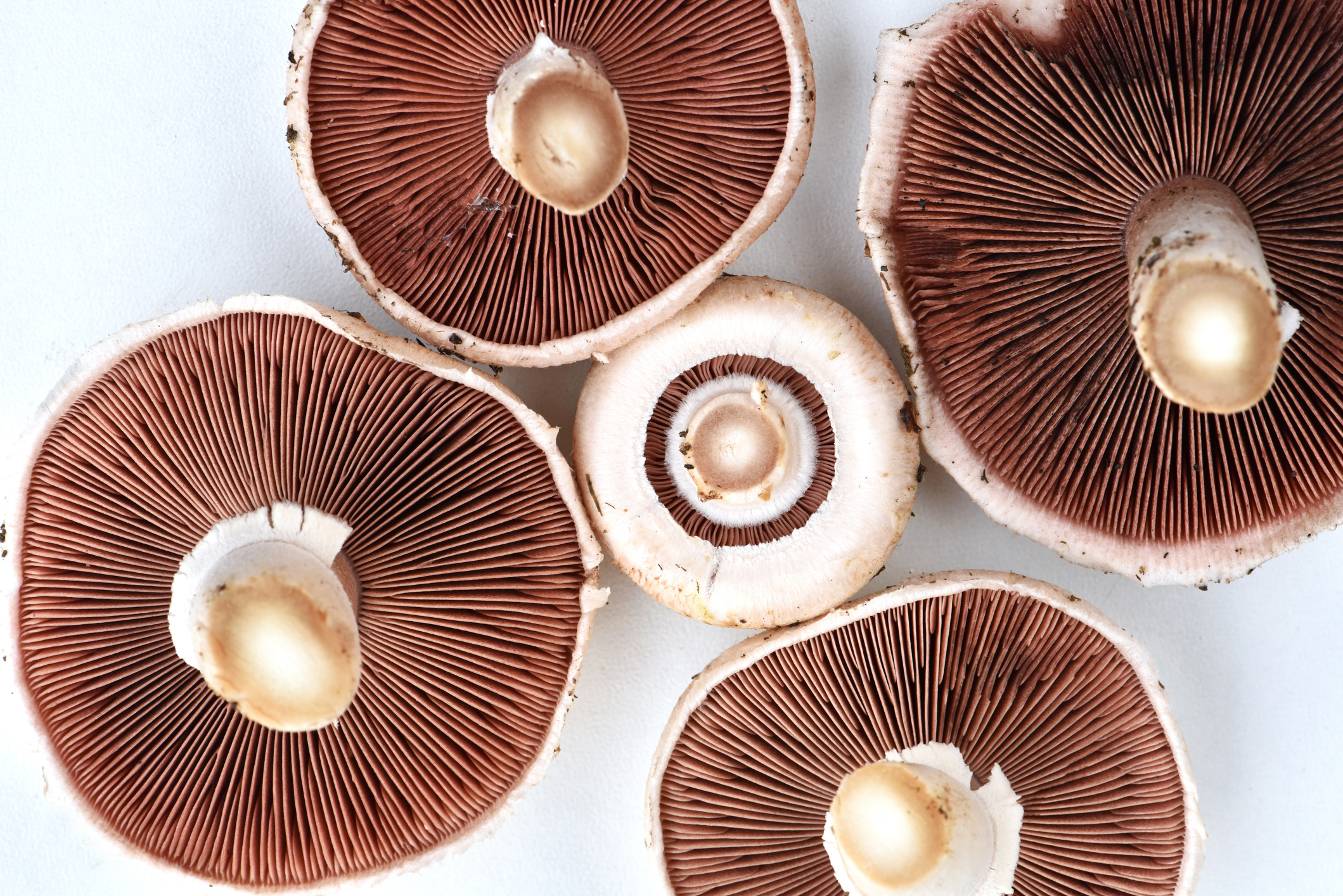
Portobello mushrooms are also within the same family of button and cremini mushrooms. However, out of the three, portobello are the largest, most mature version of them all. “Portobello mushrooms are generally larger in size and are the giant version of baby bella and cremini mushrooms,” Roszkowski says. Due to their sturdier composition, Roszkowski says they’re ideal for grilling, serving as “steaks,” making pâté, burgers, or sandwiches. “They are prized for their dense, toothsome texture and rich, meaty flavor,” she adds.
4. Shiitake mushrooms
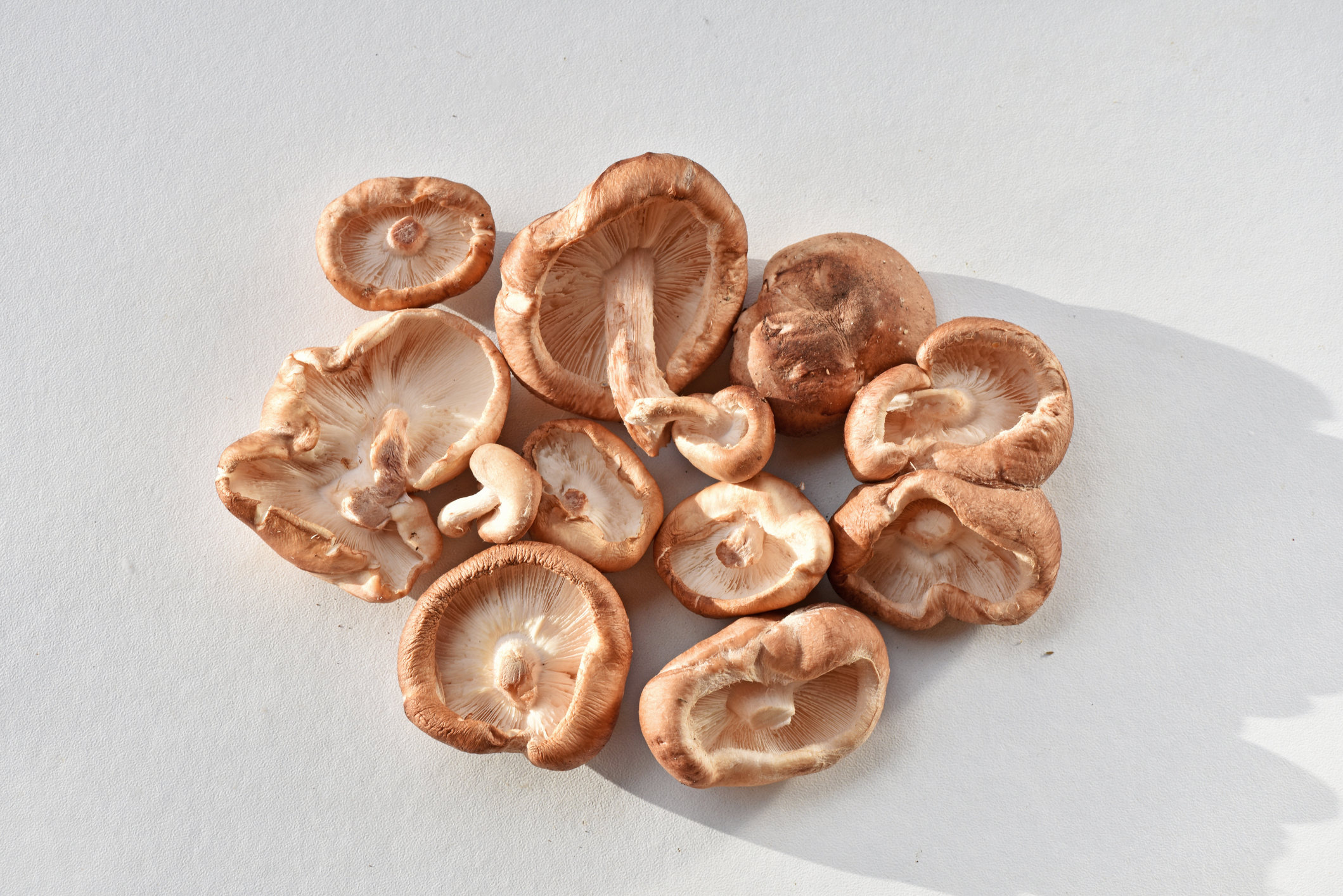
One of the tastiest and most umami-rich of the bunch are shiitake mushrooms, which have an earthy flavor and meaty texture when cooked. Roszkowski explains that this is due to the glutamic acid they contain that contributes to their umami-rich flavor profile. “They’re a wider mushroom with a thin, golden-brown cap and a thinner, fibrous stem,” she says. Roszkowski recommends roasting shiitake mushrooms into crispy “bacon” for breakfast sandwiches, adding to stir fry recipes, or flavoring rich broths.
5. Oyster mushrooms
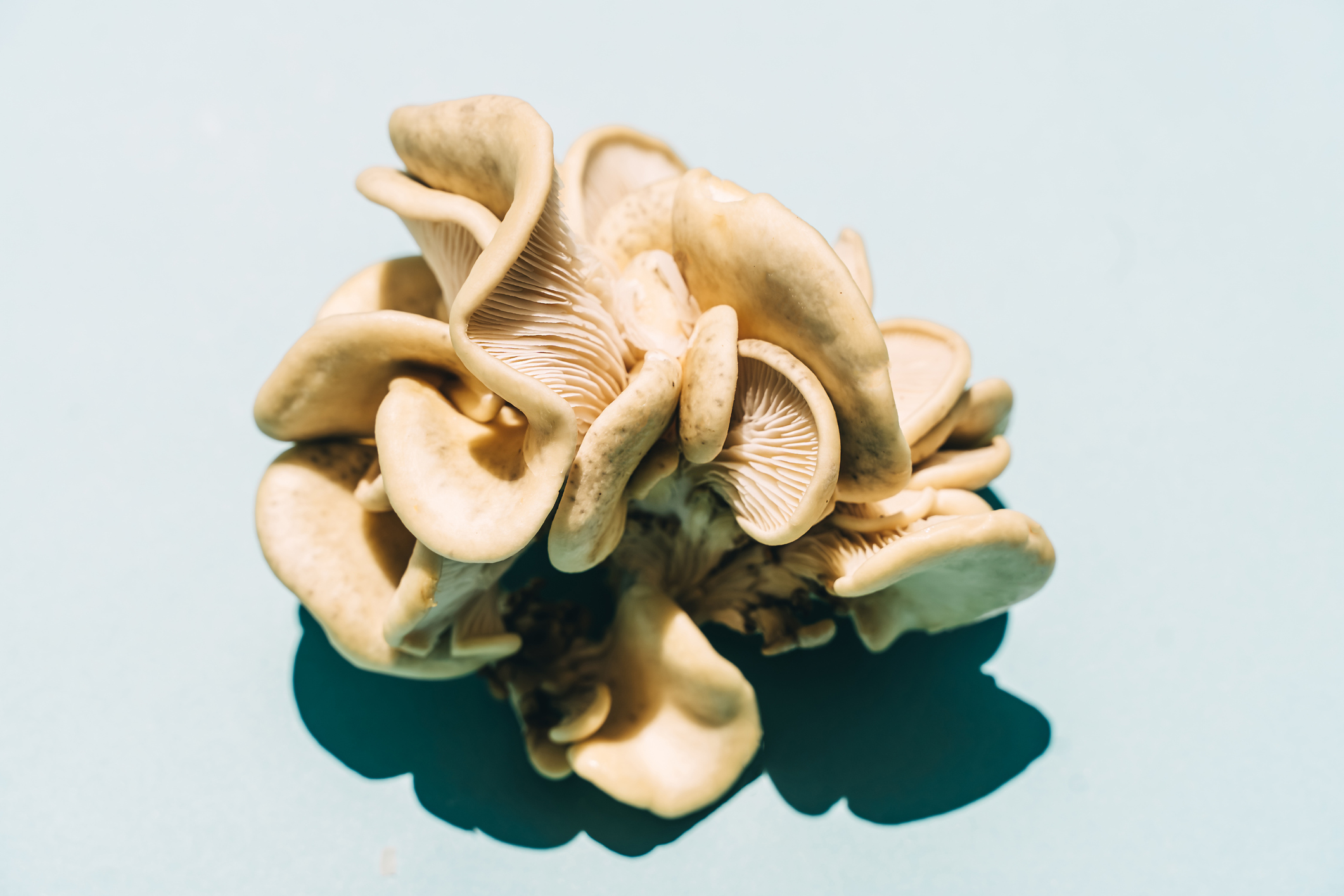
Oyster mushrooms tend to be the largest of the bunch and have the most intense flavor. They come in many shapes and sizes, although they’re generally somewhat round in shape with a long, wide stem. “Oyster mushrooms usually come in velvety bundles and contain long frilly fruiting bodies that range from pink, yellow, or brown-gray hues,” Roszkowski says. According to her, they also have a very distinguishable flavor. “Oyster mushrooms have a complex taste that ranges from briny, to earthy to slightly sea-like,” she says. “They’re considered a ‘gourmet’ mushroom and are touted for their meaty texture and versatility,” Roszkowski adds.
Oyster mushrooms’ structure also makes them ideal for just about every cooking technique. “Their petal-like thin structure cooks evenly and quickly, helping them to maintain their shape,” Roszkowski says. “Oyster mushrooms can be prepared by rubbing with spices such as a jerk seasoning, drizzling with olive oil and grilling over a high flame, or they can be cooked in a pan in a similar style to a ‘chicken under a brick,’ which will help flatten them, crisp up, and concentrate their flavor,” she says. When the holidays roll around, Roszkowski also features oyster mushrooms in stuffing or uses them to make a lazy Sunday brunch omelet or frittata.
6. King oyster or trumpet mushroom
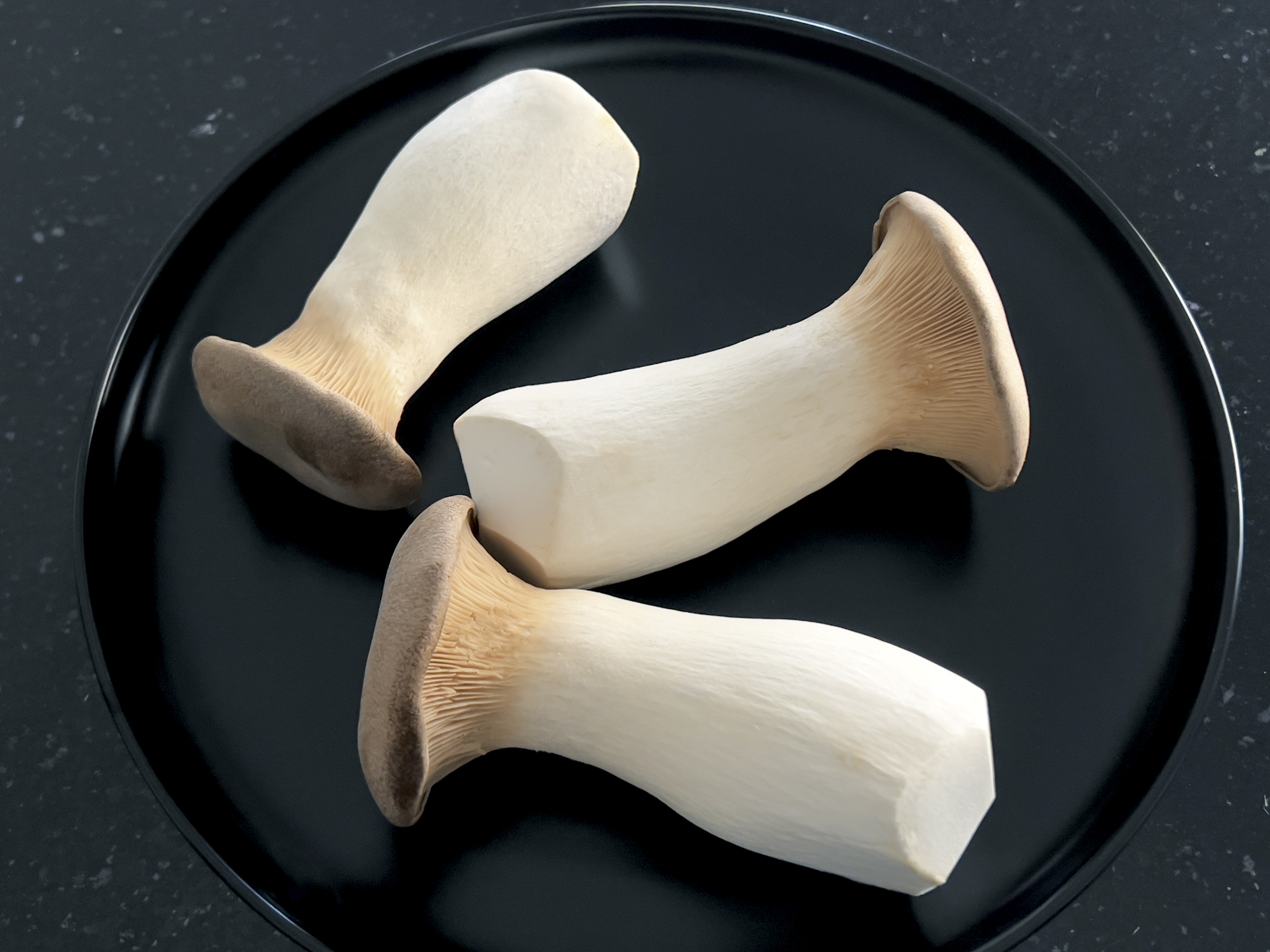
“King oyster, otherwise known as trumpet mushrooms, are ‘gourmet’ mushrooms that typically range from six to 12 inches in length and one to two inches in diameter. They have a large, lightly tan-colored stem with a brown cap that resembles a shiitake mushroom,” Roszkowski says. King oyster stems tend to be rubbery, which is why she recommends trimming them before cooking. To help soften the texture even more, Roszkowski slices and scores the stems into a scallop-like shape before searing each piece in butter or oil.
On the other hand, she says the flesh of these mushrooms is quite dense, making it ideal for many different cooking applications (or for using as a meat substitute). That’s why Roszkowski typically reserves king oyster mushrooms for making smoked or steamed pulled “pork” or carnitas, mushroom “ceviche,” crisping under a brick (or weighed down by a heat-proof grill press), pasta dishes (especially for cream sauce-based ones), or smoking.
7. Enoki mushrooms
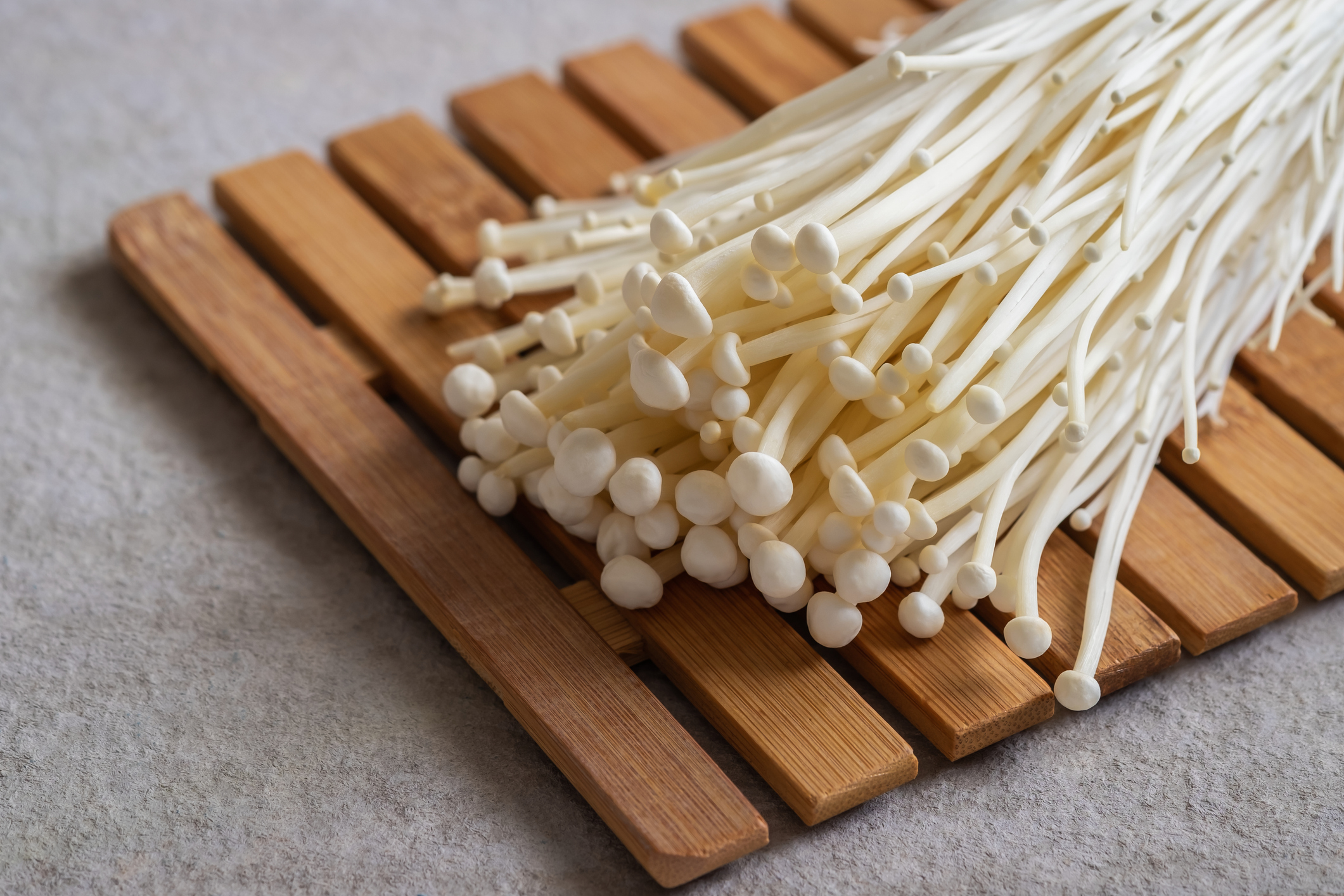
Enoki is a popular Japanese mushroom variety with a tiny cap and a long slender stem that’s cultivated in clusters and have a pale, cream hue. Due to their delicate structure, Roszkowski recommends adding enoki mushrooms to soup dishes at the end of the cooking process (to avoid overcooking them). “They cook almost instantaneously, and can easily be eaten with chopsticks or a soup spoon without having to cut them into smaller pieces,” she says. “Try adding them to your next bowl of ramen, crisping in oil into a bacon-like substitute, or even separating the stems and cooking them briefly in a pesto or cream sauce to emulate noodles,” Roszkowski says. Swoon.
8. Chanterelle mushrooms
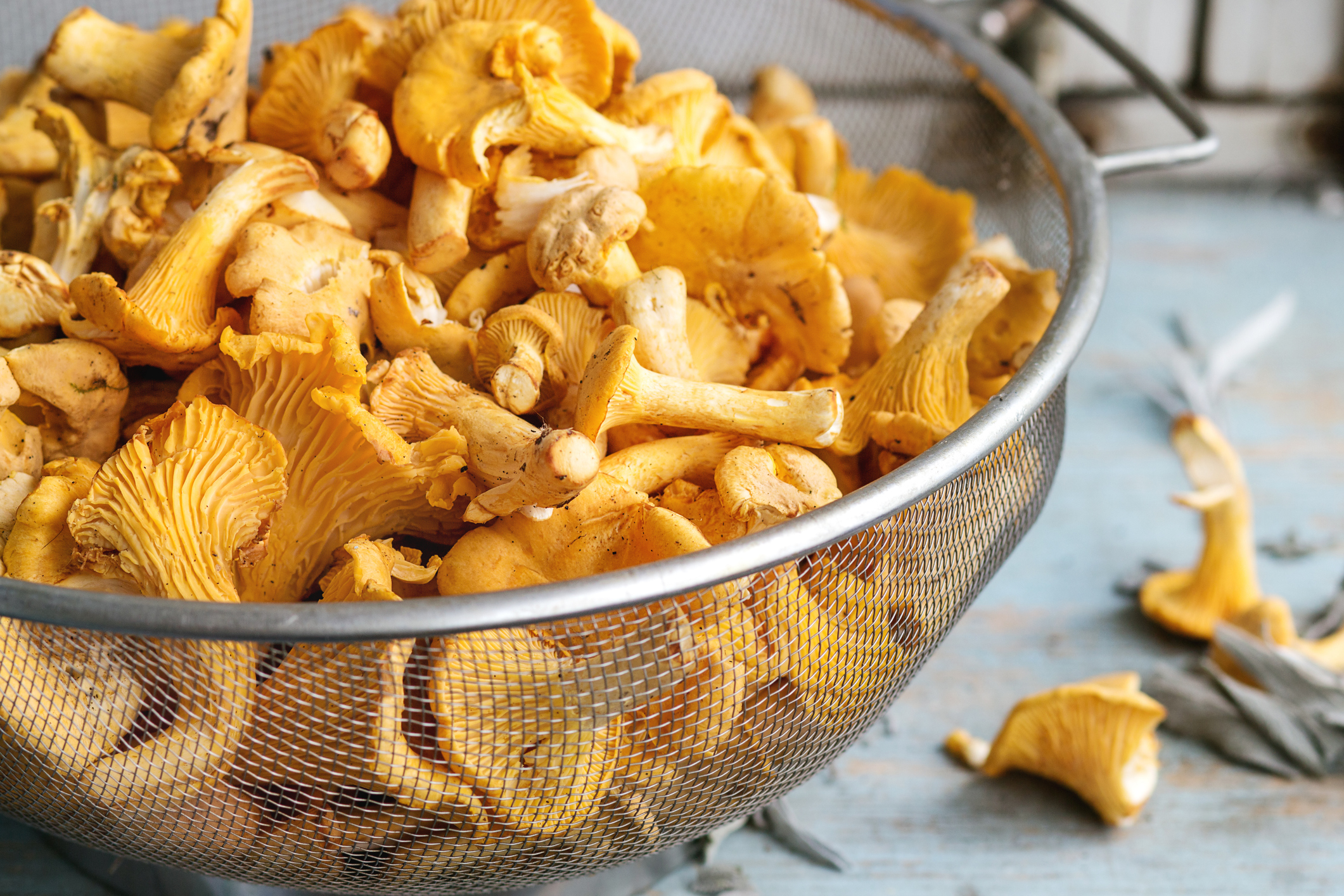
“Chanterelle mushrooms are a vibrant crimson orange shade and are not typically cultivated which makes them more rare, seasonal, and expensive,” Roszkowski explains. This mushroom variety has a unique stone fruit-like taste and aroma, and a trumpet-like shape that’s only a few inches tall. According to Roszkowski, this rare variety primarily grows on species of hardwood or coniferous trees.
In order to avoid overcooking chanterelles, Roszkowski recommends briefly cooking them on a hot pan. Plus, the simpler the preparation, the better. “Since they are so prized amongst foragers and diners alike and are hyper-seasonal, it’s best to showcase them as a garnish, in a sauce, or in a filling without chopping them too finely,” Roszkowski says. “Try incorporating chanterelle mushrooms into a pasta dish, using them as a topping for protein, or even as a filling for pierogi or crepes. Chanterelles are also delicious in a cream sauce or pickled in a brine,” she adds.
9. Maitake mushrooms or hen of the woods
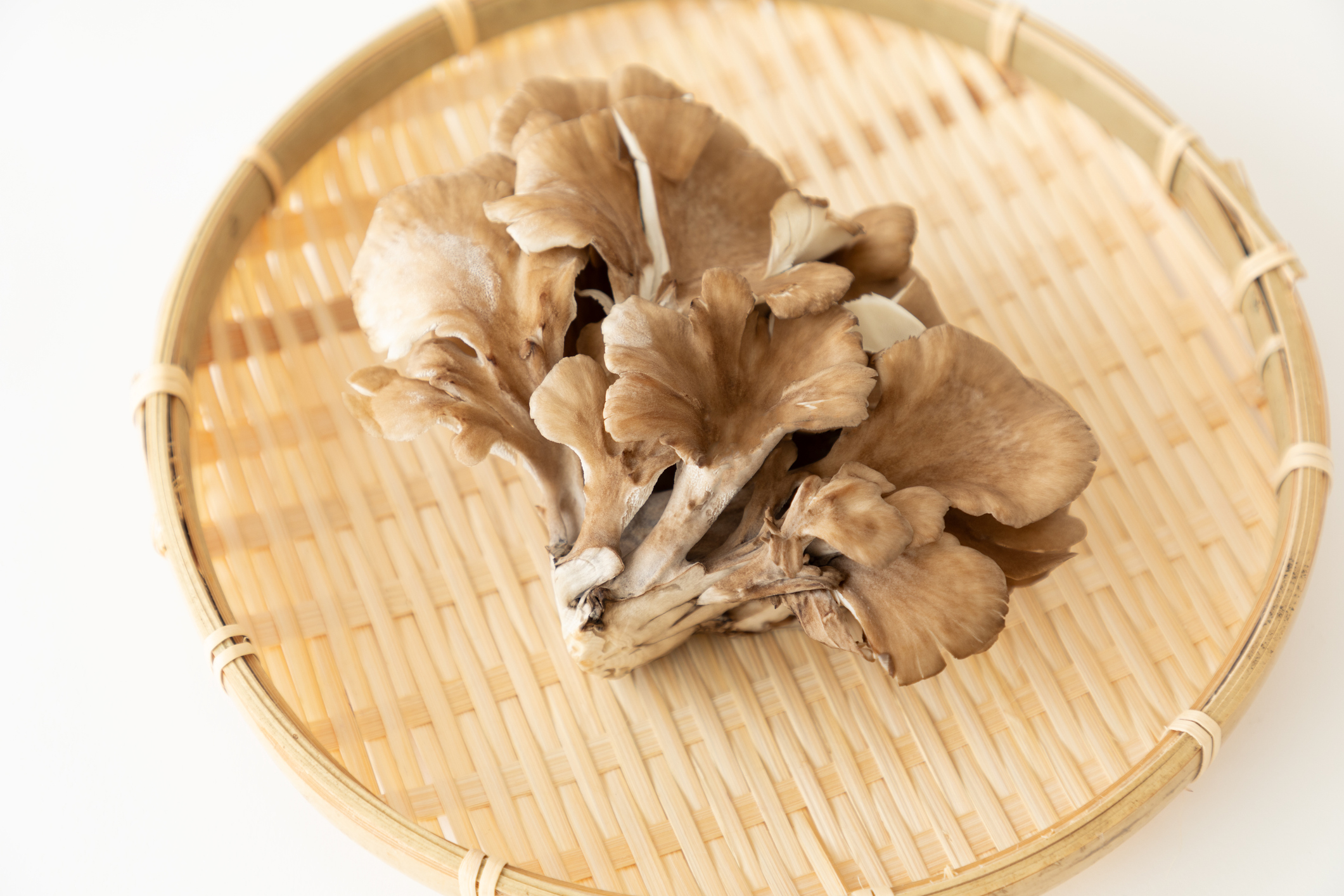
According to Roszkowski, maitake mushrooms (otherwise known as hen of the woods) typically come from Asia, North America, and Europe. They grow on the base of maple and oak trees, and can weigh up to a whopping 100 pounds. Unlike most chanterelles, maitake mushrooms can be cultivated, but they’re a bit more fragile to handle. “The small multitude of petals that make up maitake mushrooms do not contain a large amount of water content and can break off quite easily,” Roszkowski says.
This mushroom variety also has a distinctly earthy flavor with peppery and musky undertones that pair well with appetizers or main courses. “Simple and brief cooking in a hot pan or grill works best for maitake mushrooms. Try quickly sizzling them in an herb butter. Because of their low moisture content and concentrated earthy tones, maitake mushrooms perform well as a topping for pizza or focaccia,” Roszkowski says.
10. Porcini mushrooms
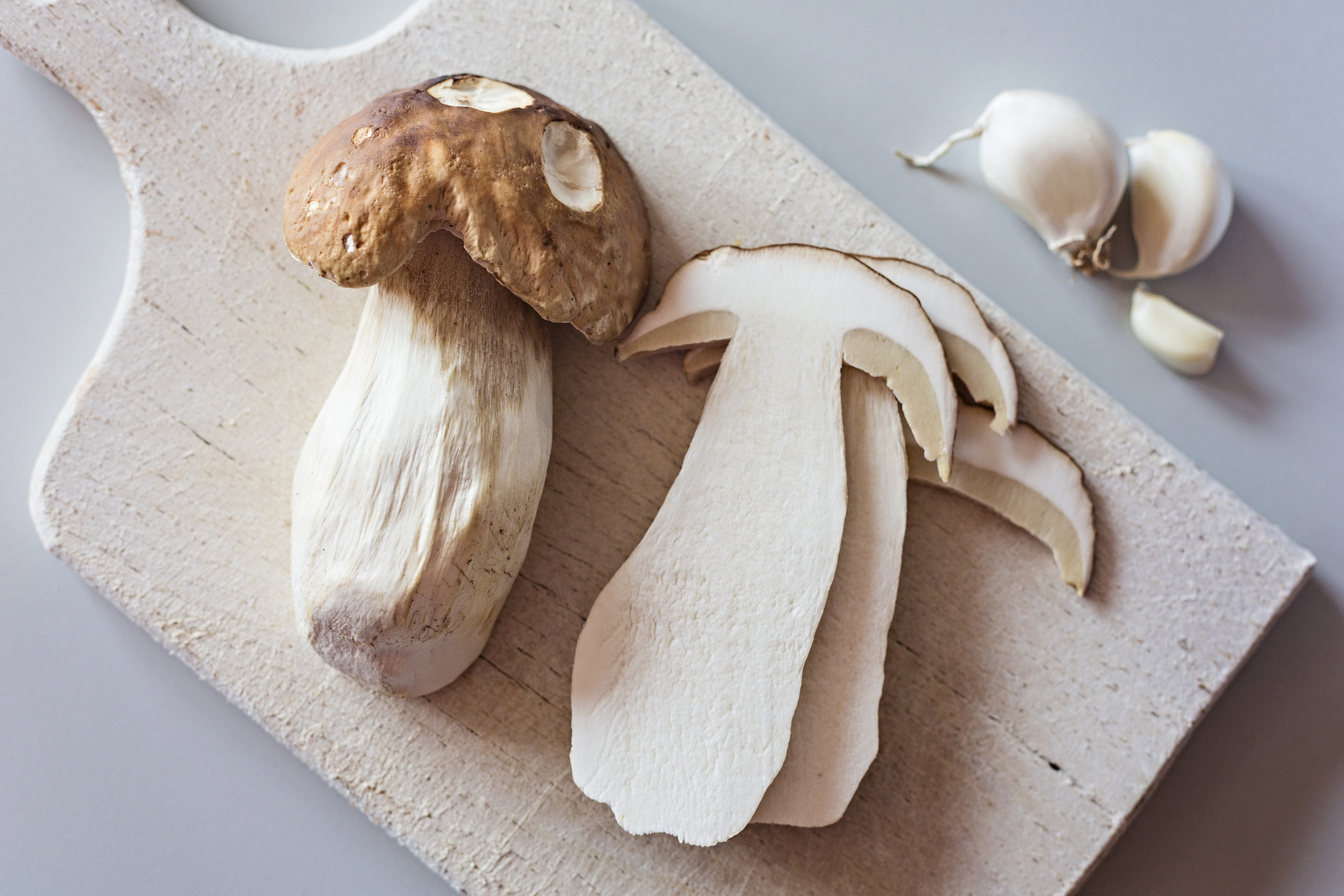
Porcini mushrooms are a popular choice among culinary aficionados. This is in part due to their accessibility. “Porcini mushrooms are a worldwide, prized gourmet mushroom variety that are foraged in regions across the globe. They’re also sold fresh, frozen, pickled, or dried in various specialty markets,” Roszkowski says. Porcini mushrooms are reddish-brown in color, and contain an elongated, bulbous edible stem. Both the stem and cap are edible and “contribute a well-rounded nutty and earthy flavor to any dish,” Roszkowski says. Some her favorite ways to feature porcini mushrooms include: slicing and cooked them in a sauce, using them in ravioli fillings, or adding them to risotto or eggs. “Dried porcinis can also be used to make a deep-flavored vegetable stock or broth,” Roszkowski adds.
11. Lion’s mane mushrooms
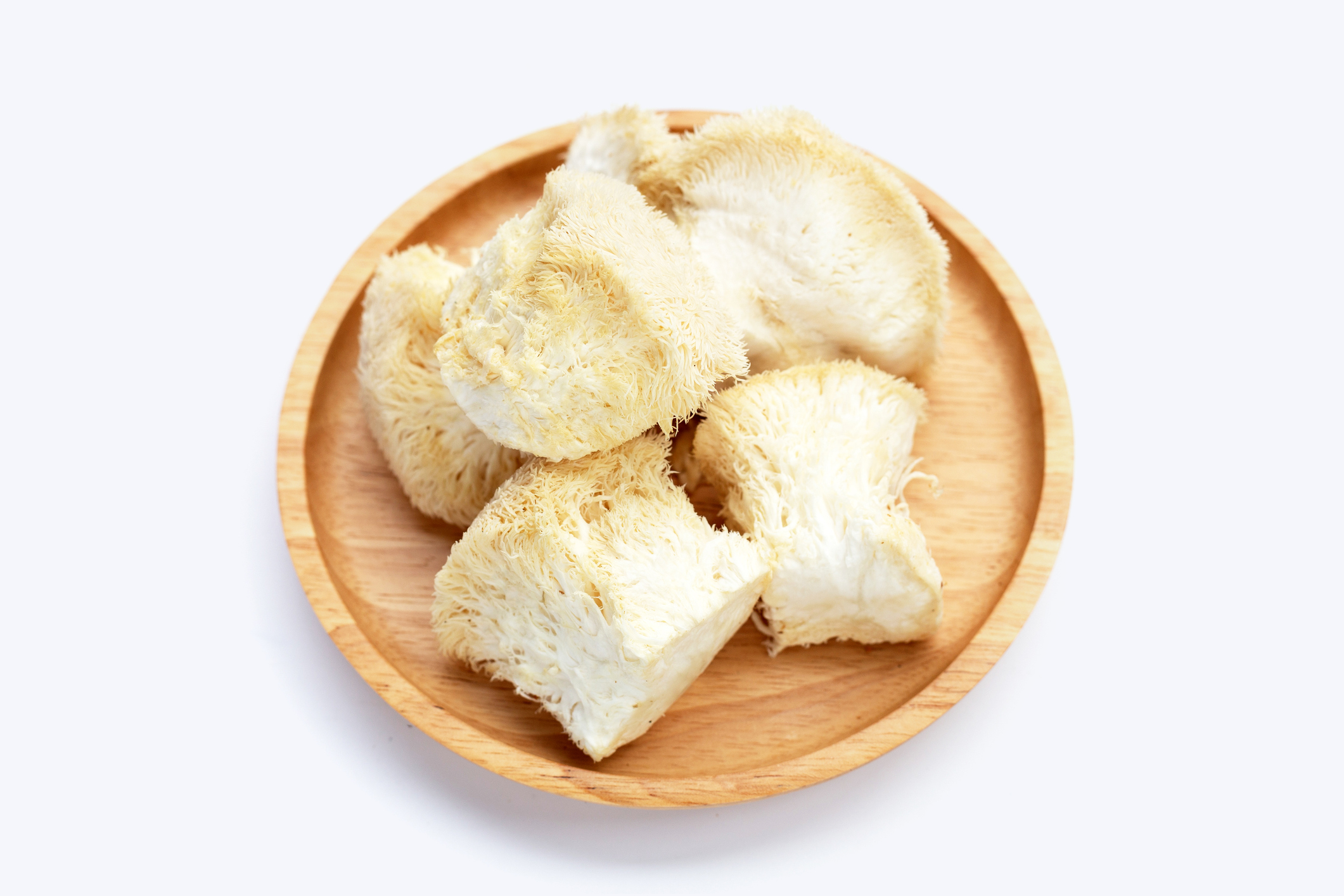
“Lion’s mane mushrooms are named for their prominent, flowing white tendril that resemble their namesake animal,” Roszkowski says. Honestly, makes sense. Roszkowski says they’re great in many culinary applications, but are also considered a functional mushroom that can offer a few health benefits. “According to Eastern medicine, they can potentially support nerve regeneration in the brain,” she says.
Lion’s mane has a sweet, subtle flavor and delicate texture. “Many attribute the mushroom to a likeness of seafood, especially crab,” Roszkowski says. Lion’s mane can be shredded, breaded, or cut into strips, you name it. But Roszkowski’s favorite way to serve them is in a salad or stir-fry. “Try smoking them and shredding them into a ‘whitefish’ salad, or coating them with cornstarch and frying before adding them into a General Tso-like sauce or stir-fry,” she says.
12. Shimeji or beech mushrooms
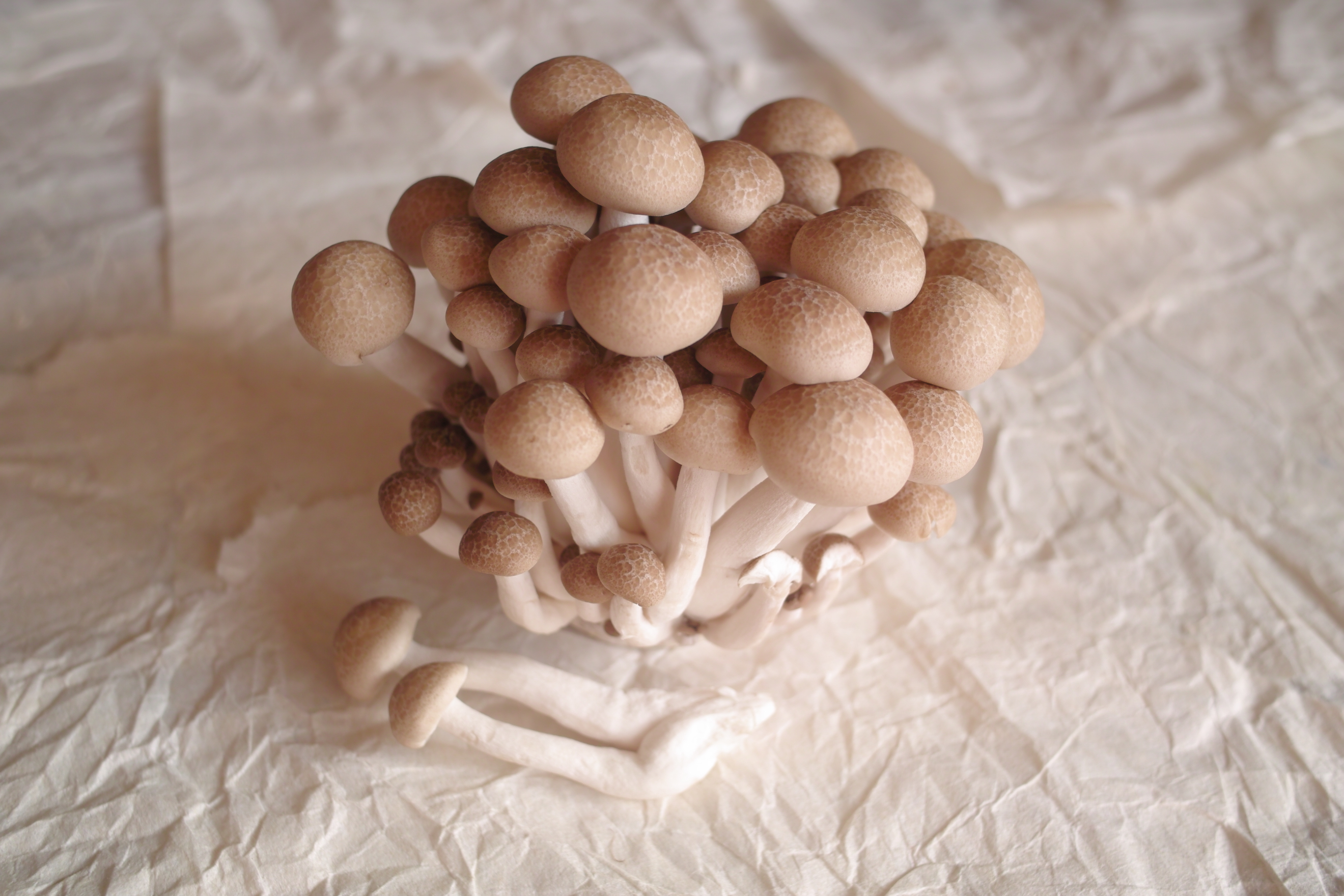
Shimeji (or beech mushrooms) are cultivated in different forms, ranging from a cream-white shade to a deep tan color. “They have a mild, slightly sweet and nutty flavor and aroma, especially when they hit a hot pan,” Roszkowski says. This variety of mushrooms are cultivated in clusters with small round caps, and slender, long stems. “They are rich in umami-like compounds like glutamate, making them a welcome addition to almost any savory dish,” Roszkowski says.
The best part? Shimeji mushrooms are hearty and don’t disintegrate easily, making them a good choice to showcase in cooking applications that have a longer cook time, Roszkowski explains. They’re a great addition to hot pots, soups and broths, savory tartlets, or puff pastry recipes.
13. Wood ear mushrooms
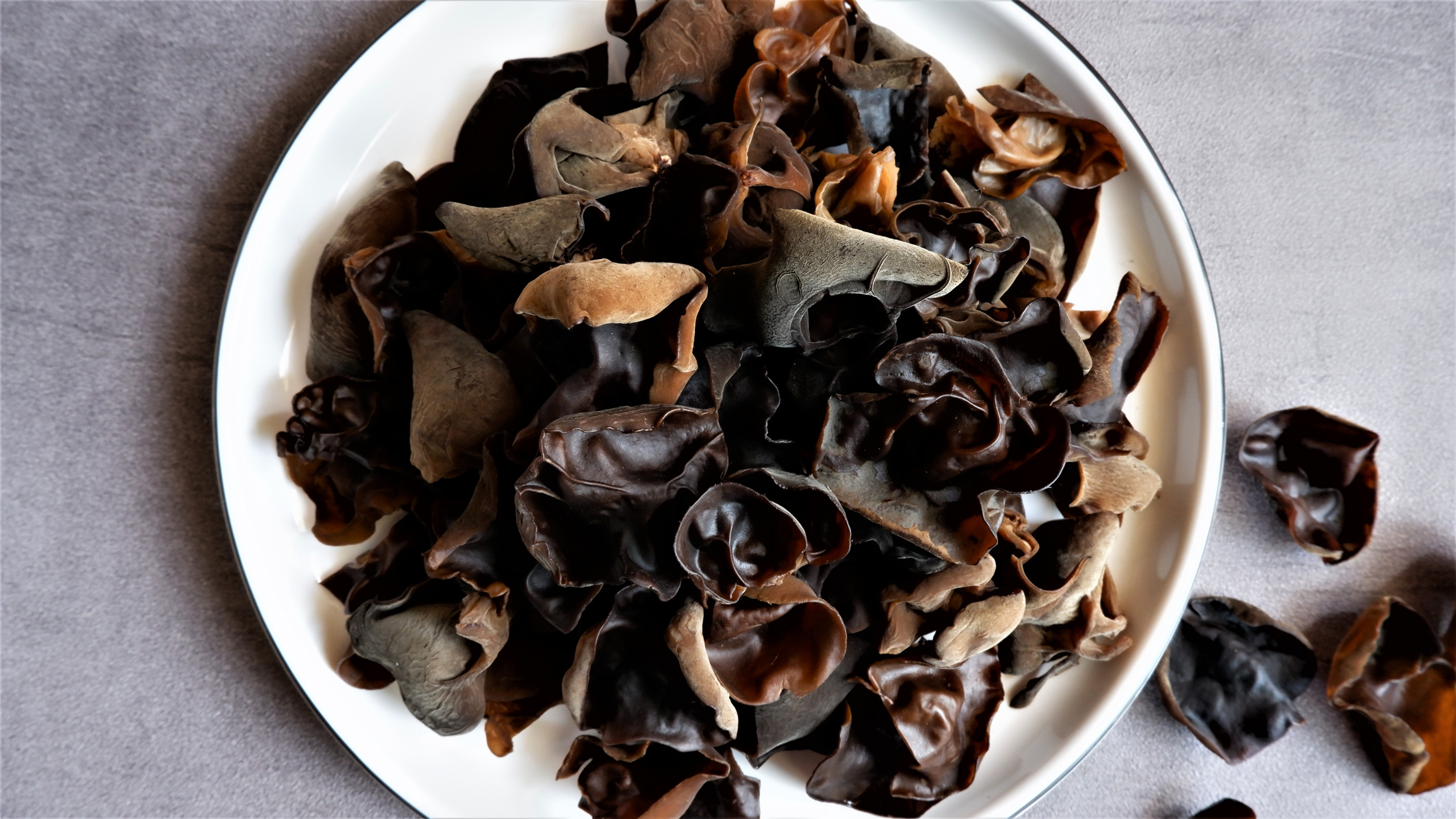
Wood ear mushrooms are a deep brown shade, ear-shaped, and almost gelatinous in texture, Roszkowski says. She adds that wood ear mushrooms contain an earthy taste and aroma, but mostly absorb the flavor of any liquid they are cooked in. “Wood ear mushroom dishes can be served warm or cold, and they do well as a chilled salad, stir-fry, or soup. Add wood ear mushrooms into your next hot and sour soup, brothy noodle dish, or serve chilled with sesame oil as a salad,” she says. That said, Roszkowski notes that the texture can be very polarizing as they’re crunchier than most common mushrooms. “So try using small quantities at first to see if they are something that you enjoy,” Roszkowski suggests.
14. Cordyceps mushrooms
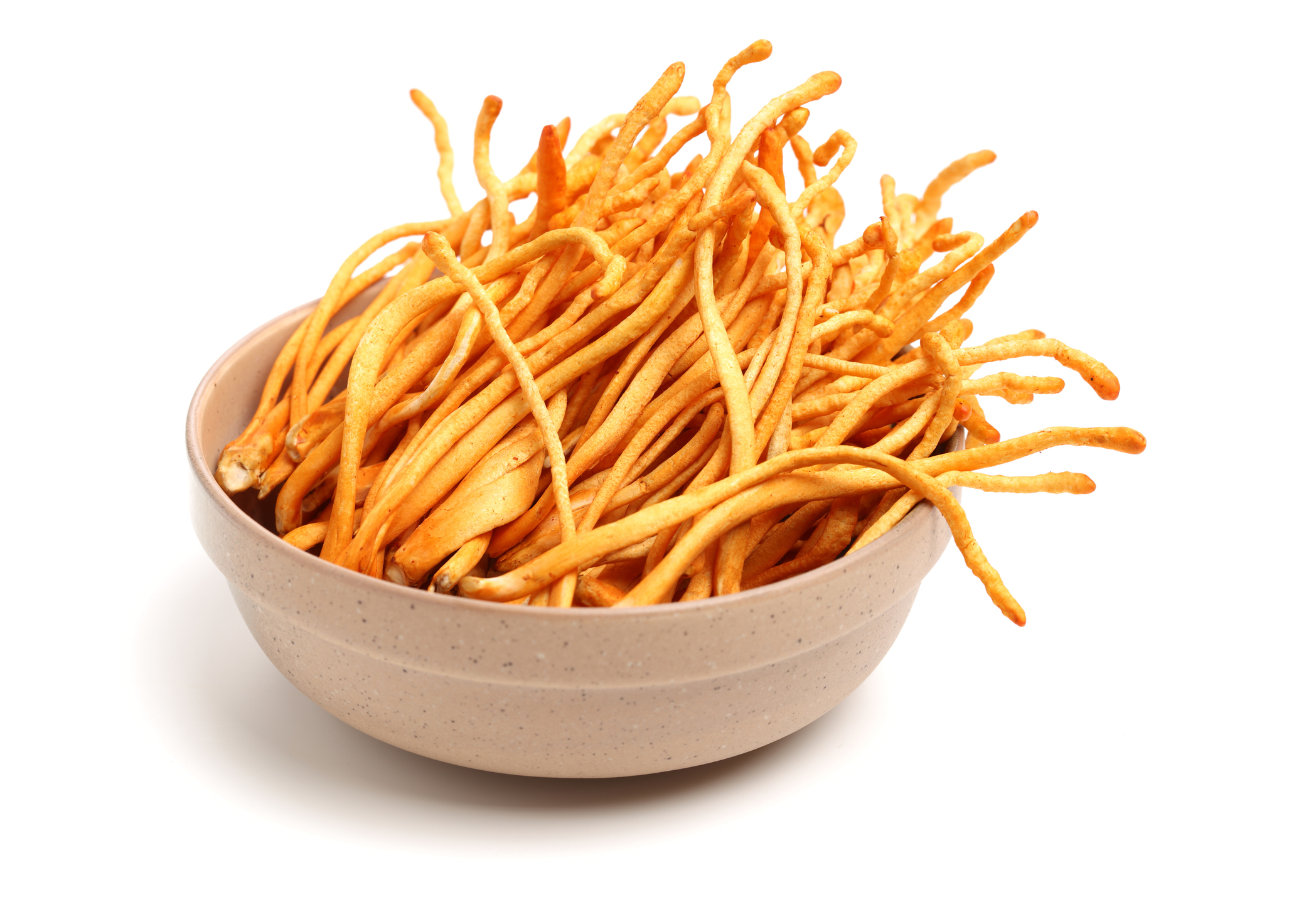
“Cordyceps mushrooms are bright orange, finger-like projections that are small in stature. They are touted for their functional, adaptogenic properties, which can potentially help the human body ward off stressors, possibly regulate immune response, and increase stamina,” Roszkowski says. This types of mushroom can be foraged and cultivated, and are most commonly sold dried, in powder, or in capsule form. “Culinary applications include adding a small amount of powdered cordyceps to specialty lattes or dark chocolate brownies or truffles. It’s best to pair them in small quantities with strong flavors such as coffee or chocolate for optimal results,” Roszkowski says.
What is the best-tasting mushroom?
According to Roszkowski, the best-tasting mushroom is the one you know how to cook correctly. In fact, she says the way you cook a mushroom ultimately has the biggest impact on how it tastes. To unlock the highest levels of umami, Roszkowski says you’ll need to bring the heat. “The best-tasting mushroom is one you can hit with a quick, high-heat cooking application in a small amount of fat. This allows the outside of the mushroom to caramelize while still retaining its interior integrity—allowing it to keep its shape,” she says.
Additionally, the fresher the mushroom, the tastier it’ll be. This is why Roszkowski says sourcing newly-harvested mushrooms whenever possible is a must. “Mushrooms are very porous so they will absorb a great deal of moisture once placed in packaging and eventually become soggy. If a wet mushroom is placed in a pan, it is more likely to steam and not be able to caramelize properly to bring out those sought-after Maillard reaction, complex flavor notes,” she says.
What are the rarest mushrooms?
Although you can’t go wrong with the aforementioned types of mushrooms, wild mushrooms tend to be treasured for their scarcity. “The rarest mushrooms are the ones that cannot be cultivated and only grow wild in the forest and need to be foraged,” Roszkowski says. “They only grow in climate conditions where the soil conditions are ideal and are a seasonal product. All this, combined with the laborious work to find them, makes wild mushrooms the rarest type of mushroom,” she says. Roszkowski explains that a few varieties of rare culinary mushrooms chefs trending in the culinary landscape include porcini, morels, chicken of the woods, and matsutake. Keep in mind that they often come along with a hefty price tag.
Poisonous types of mushrooms unsuitable for cooking
Although wild mushrooms are sought after, Roszkowski stresses the importance of sourcing them with the help of a professional. “If you are foraging for mushrooms, it’s extremely important to work with professionals or use caution before cooking to properly identify them, as many varieties contain toxins that can be lethal if consumed,” she says. On the other hand, although edible mushrooms may be safe to eat, all types may not be as easy on digestion. But cooking them can help. “Most edible mushrooms will be more digestible once they undergo some type of cooking application or cured with acid,” Roszkowski says.
Kiss your worries away with a batch of these stress-busting, adaptogenic chocolate reishi mushroom muffins that can be made with your favorite mushroom powder recipe:
[ad_2]
Source link
